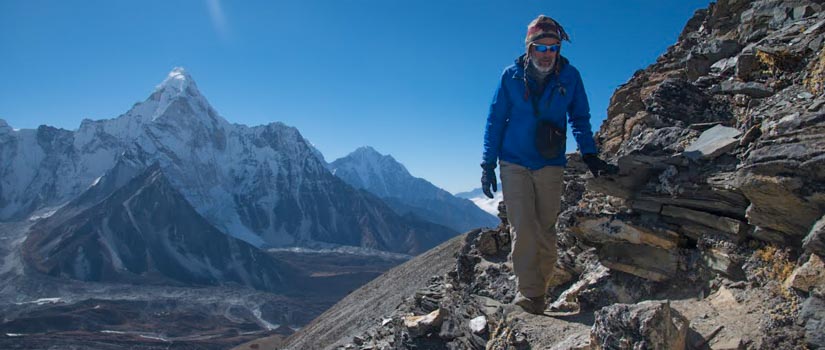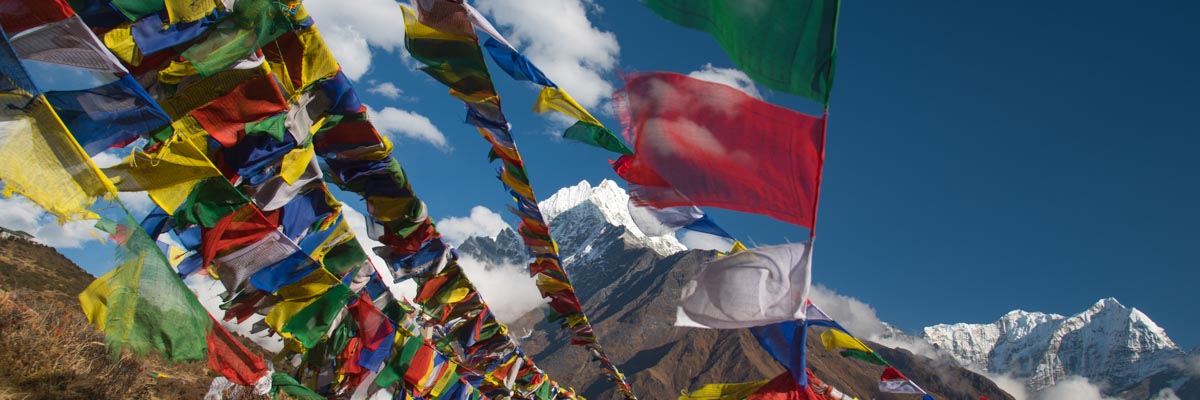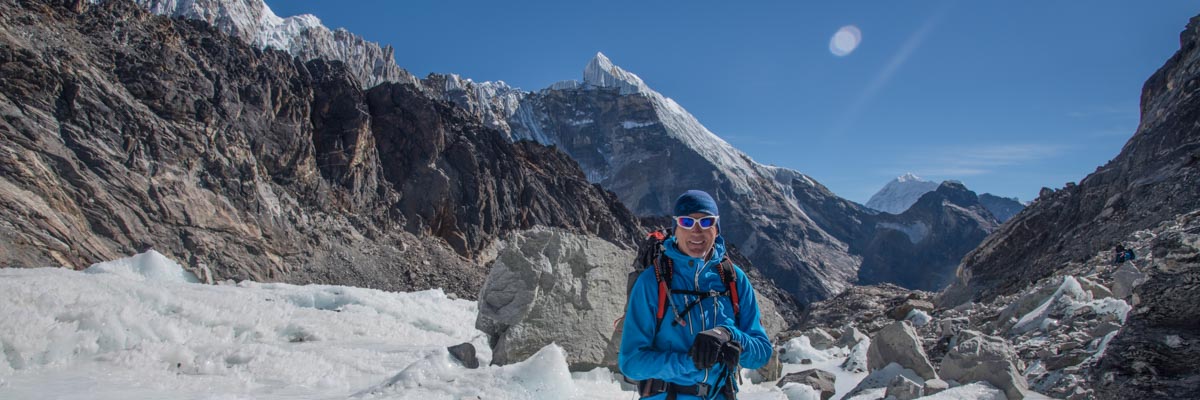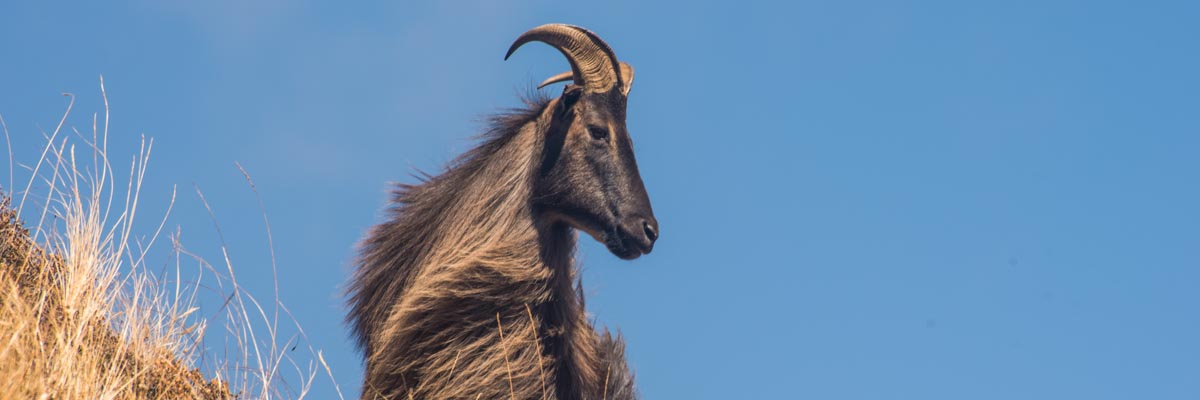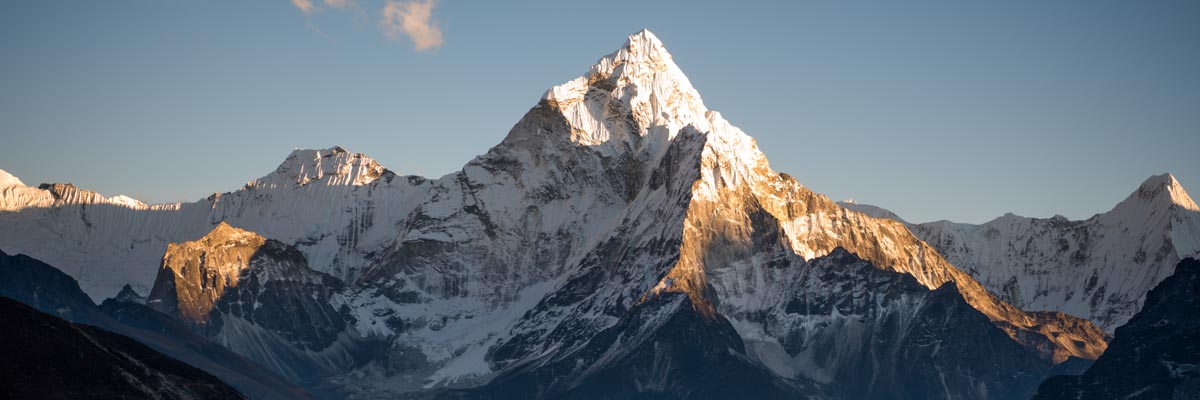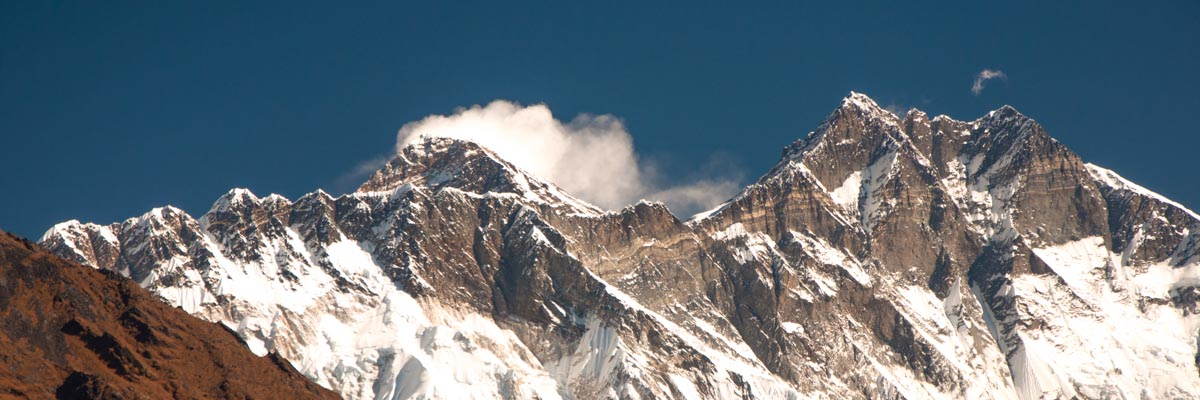Everest Region
Everest Region
The Everest Region, also known as the Khumbu Region, lies towards the northeast of Nepal. It is a popular destination for trekking and doesn’t need much explaining to understand why. It is the gateway to Mt. Everest. Every year thousands of trekkers travel to Nepal to hike the famous trails. Travelers can enjoy magnificent views of the Himalayas and other snow-capped mountains. The Everest Base Camp ( 5,500m) is a bucket-list for a lot of people. With wonderful scenery and culturally rich, the Everest Region is also home to the famous ethnic group of Sherpas.
Get started
Book now to begin your journey into Nepal
Everest and its people
Everest region is named after the most significant peak in the region, the world’s highest peak, Mt. Everest. It lies in the Solukhumbu district, East Nepal which is why sometimes it is also known as the Khumbu region. The region includes Sagarmatha National Park and The Sagarmatha National Park Buffer Zone.

The major ethnic groups of this region, the Sherpa people, believe Khumbu to be one of many “hidden valleys” that were predesignated by a 9th-century Buddhist saint, Padmasambhava. The people are Buddhists and speak in their own Sherpa tongue which originally came from the Tibetan language. Tourism and animal husbandry are the main occupations of the people permanently residing in the region.
Highlights for this Region
The World’s Highest Peak and Base Camp :
Mt. Everest (8,848.86m) is perhaps the most notable highlight of trekking in this region. The base camp lies at 5,600m and is a popular trekking destination among the many other highlights of this region. Reach the world’s highest base camp in this trek.

Kala Pattar :
Kala Pattar lies close to the Everest Base Camp and is at a height of 5,545m. It offers a majestic panorama of the highest peaks in the world and trekkers can catch an even more beautiful scene at either sunrise or sunset.

Gokyo Lakes :
Gokyo Lakes are a group of iconic lakes situated at upper Khumbu. There are six main lakes that make up the world’s highest freshwater lakes. The lakes are turquoise in color and offer a majestic view towards Mt. Everest. Explore Gokyo Lakes with this trek.
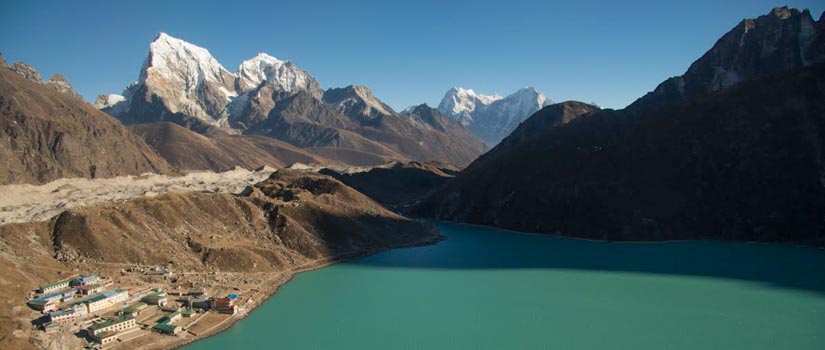
The Three High Passes :
The three main passes of the Everest Region are Kongma La Pass, Cho La Pass, and Renjo La Pass. Mountain passes are navigable routes that go over or through a mountain. The passes of the Everest Region have stunning views that make the tough climb worth it. Explore our Three High Passes Trek here.
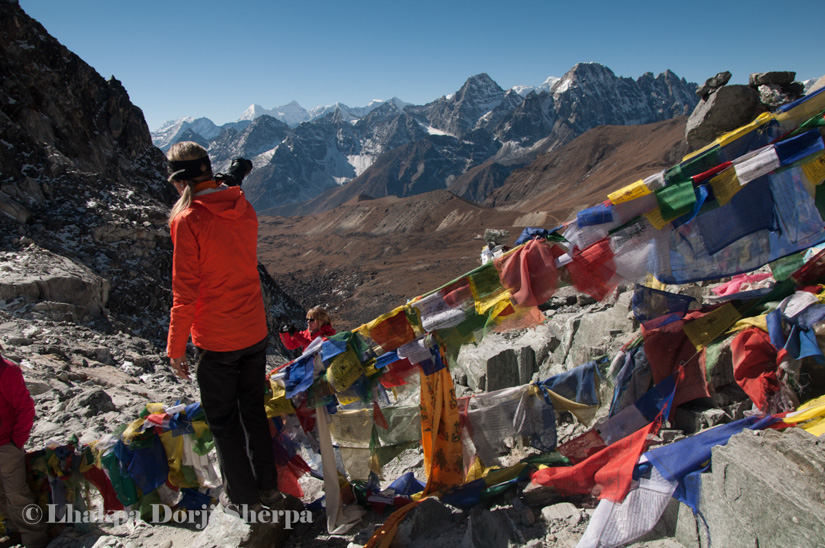
Sagarmatha National Park :
The Sagarmatha National Park was established in 1976 and further recognized as a World Heritage Site three years later in 1979. It is home to a diverse range of flora and fauna, most notably musk deers, the Himalayan tahr, etc. It also houses a wide variety of birdlife.

Sherpa Hospitality & Culture :
The Sherpa people are known for their hospitality and their inviting nature all around the world. The people of the Everest Region are predominantly Buddhist and speak their own Sherpa Language. Their lifestyles and culture can be experienced when trekking through the region.

Buddhist Monasteries :
The Everest region is dotted with monasteries in most of the villages. Buddhism plays a major role in the lives of the Sherpa people and their ties to their religion are bounded stronger with monasteries in their villages. Some of the most famous monasteries are the Tengboche Monastery, Thame Monastery, and the Pangboche Monasteries, each having their own unique and interesting history behind their establishment.

Why trek with us
Years of experience
We have 15+ years of running treks in different parts of Nepal. We started out as a small trekking company run from our own home, focused and determined to make every trek memorable.
Your experience first
We have a passion for running meaningful and memorable treks in Nepal and so we make sure to keep your experience of Nepal over other things. We also provide custom itineraries to fit our clients’ different needs and requirements as well as their goals and interests.
Health and Safety is a priority
We make sure that our treks are run following proper hygiene standards and protocols. Getting you to your destinations is our goal and making sure that our clients are healthy and in safe hands is our topmost priority.
Safety record and easy helicopter evacuation
We focus on each and every detail of our treks and make a commitment to maintaining our safety record. Being an experienced company, we understand the importance of time during any sort of emergency. That is why we make sure to get our helicopter evacuations as quickly as possible if ever needed.
Close relationships with locals in different regions
We keep a close relationship with the locals in our trekking destinations. That is one of the reasons why our clients get to experience some sides of Nepal and the Nepalese people that most companies ignore. Also, it is always a good time when you’re greeted with the warmth of the people in the Himalayas as one of their own.

Custom Itineraries for you
Not sure or confused which trek you want to embark on? Get in touch with us and we can tailor a custom itinerary for you. We take into consideration your needs and requirements and build your private itinerary that fits your timeframe as well.
